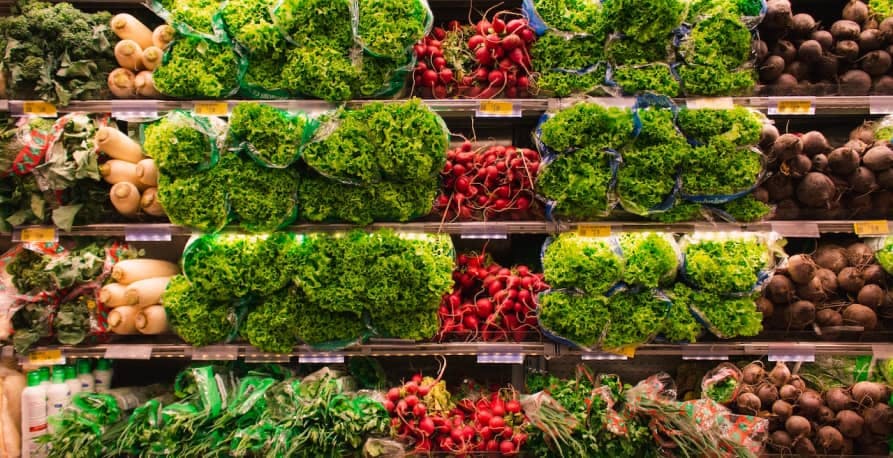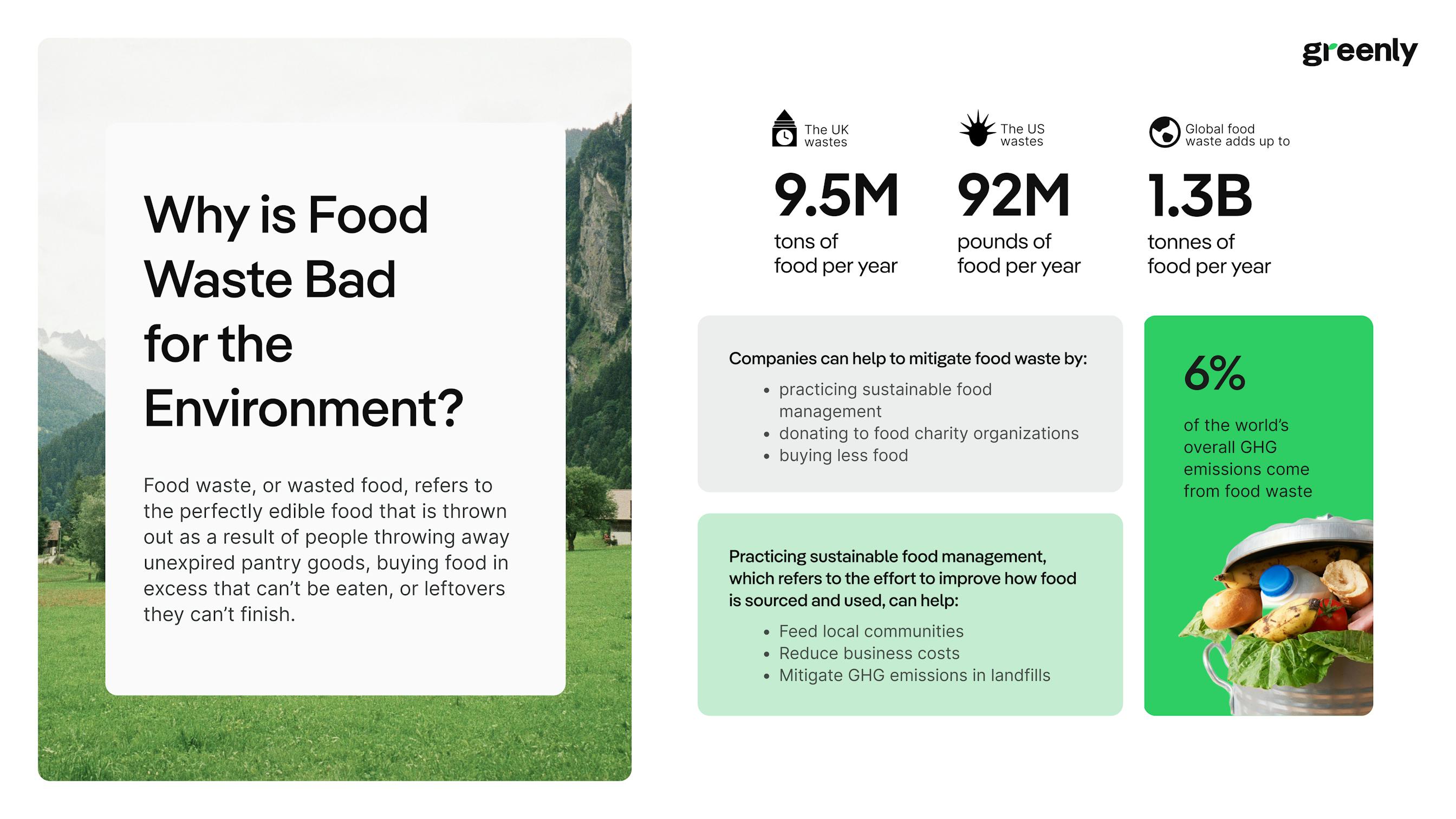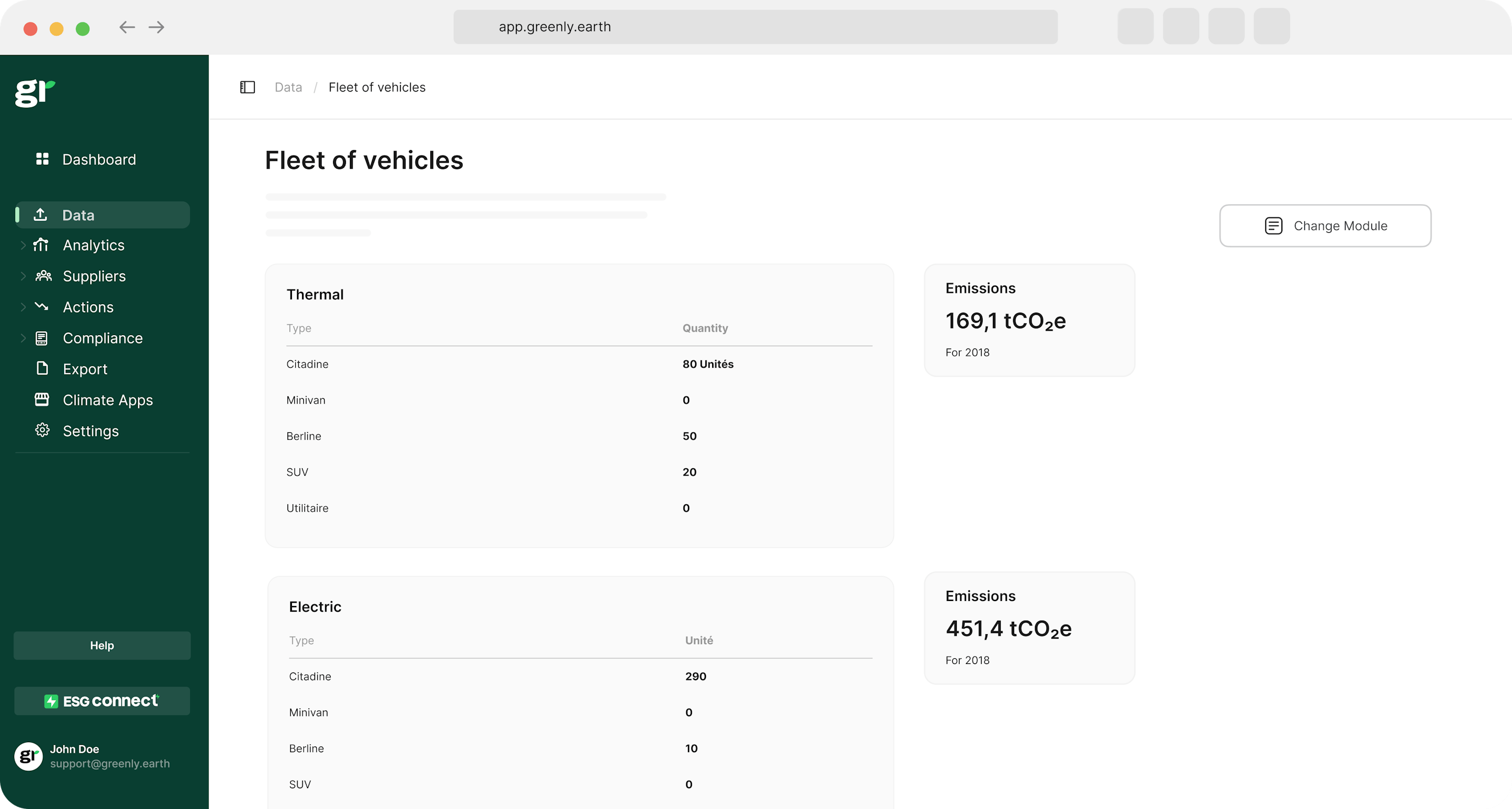ESG / CSR
Industries
Global Food Waste in 2025



Global food waste is a cross-cutting issue that starts during agricultural production, available food supply, and continues all of the way to the landfill.
Over 30% of food is lost or wasted each year. This number is even more striking, given the large number of hungry people in the world. Wasted food is not only inefficient, it's a social justice issue – as all the food wasted could be used to serve the food recovery hierarchy and prevent perfectly good food from being wasted.
💡 Global food waste has an enormous environmental impact, too – as food waste is a huge source of potent greenhouse gas (GHG) emissions and wasted natural resources. Therefore, reducing food waste and encouraging others to store food properly could help to reduce global greenhouse gas emissions, establish food security, and encourage healthy food systems.
However, this isn't to say people are ignoring the problem of preventing food waste entirely. Many large businesses, startups, and nonprofits see the issue of food waste as an opportunity. Billions of dollars and calories of food are wasted each year, and the benefits of this value can be recovered – such as with fundraisers for food waste to encourage customers to prevent wasting food and donating more food to charities for every item purchased.
In this article, we'll explain what food waste is, how we can reduce wasted food, and why it's important to contribute to prevent food waste and contribute to the food waste challenge and encourage others to take part in reducing wasted food.
What is food waste?
When we talk about food waste, we may think of the food we throw away after cooking meals, failing to freeze food, tossing perishable foods because they've gone bad, or the uneaten food from our tables at fine dining establishments.
👉 However, the sources of food waste are far more varied than this. Food waste includes lost or discarded food at all stages of the food system – including failing to eat leftovers, donating edible food to food banks, and throwing edible food scraps that can be used for stock or garnishes away.
Here are some important definitions related to food waste:

Food waste: definition
“Wasted food” is the term used by the US EPA instead of “food waste” to express the value that can be recovered through alternative uses.
To properly implement tactics for food waste prevention as an effort to cutting global food waste, alternative uses for the food must be identified.
Wasted food comes from a wide variety of sources:
| Unsold food from local markets or other retail outlets such as produce food |
| Plate waste from restaurants |
| Prepared, perfectly edible food that has not been eaten |
| Trimmings like food scraps from food preparation in restaurants, cafeterias, or homes; and by-products of food and beverage processing |
What is the difference between food waste and food loss?
There are a few different categories under the umbrella of wasted food.
👉 “Food loss” refers to uneaten agricultural, forestry, and fishery products. It occurs during the food production and distribution stage. It is also caused by either a reduction in the quantity or quality of food.
This may occur due to various reasons. For instance, there may be disruptions in the supply chain due to fluctuating supply and demand or spoilage due to adverse weather conditions.
👉 “Food waste,” on the other hand, refers to edible food that is intended for human consumption, but instead gets discarded or expires. This can occur in many different situations during preparation, sales, or food service. It includes plate waste, spoiled food, and discarded peels and rinds.
Rich countries waste the most, as do industrialised countries – who often have a significant impact on this food loss and waste.
“Food loss and waste” is a term used to define the sum of both types of inefficiencies from unused food in the food system. Ultimately, this term helps researchers clearly explain the broad scope of their studies.

Is there inedible or unavoidable food waste?
Some food byproducts are inedible such as bones, egg shells, or rough fruit and vegetable peels. However, the conventions for using these different parts of food vary from culture to culture. This makes it hard to quantify how much wasted food is truly unavoidable if wasted food is not consumable.
Global waste: what is the share of food waste?
Over a third of all food produced (around 2.5 billion tons) is lost or wasted each year. One third of this occurs in the food production stage. Boston Consulting Group (BCG) estimates this wasted food is worth $230 billion.
👉 Researchers estimate the lost food calories from food waste amount to roughly 24% of the total available food calories. To put this in perspective, the UN reports that about a third of the global population, mostly in developing countries and low income countries, didn't have enough access to food in 2020–an increase of 320 million people from the previous year.
The trend is increasing, too. The level of food wasted globally is expected to rise by another third by 2030 – making it more important than ever to buy only what we need and to develop local government incentives to feed families in need.
What about the United Kingdoms' food waste?
Despite the fact that 8.4 million people in the U.K. qualify as being subject to food poverty, food is still wasted in the United Kingdom on a colossal scale – with the amount of food waste in the country being able to fill Wembley Stadium 9 times!
👉 In fact, the average person in the U.K. wastes nearly 70kg of food every year – contributing to the whopping £14 billion worth of food wasted in the United Kingdom annually.
In total, food waste in the U.K. could feed around 30 million people every year. On the upside, businesses in the U.K. are encouraged to fight against food waste via anaerobic digestion, composting, donation, fertiliser, and to support environmental costs like wastewater treatment.
Could the remaining two-thirds be transformed into profitable or less damaging activities in order to prevent greenhouse gases, improve habits for buying food, boost the global economy, and improve the way local farmers cultivate fresh produce?
Food waste: what is the problem?


The carbon footprint of food waste
👉 In 2013, the Food and Agriculture Organization of the United Nations (FAO) estimated that 1.3 gigatons of edible food is wasted each year, and this releases 3.3 gigatons of CO₂ equivalent. This estimate doesn't include land use change, either, which would put the figure even higher.
Research compiled by Our World In Data estimates that food waste accounts for about 6% of the world's total emissions. Fro this 6%, about 2/3 of the emissions is a result of how much food is lost, and the remaining 1/3 is from food waste.
The main causes of food waste
There are some unexpected causes for the food that gets wasted. It's understandable that people don't finish large portions of food at restaurants on a retail and consumer level, but some of the less obvious reasons for food waste are due to agricultural processes, food safety standards, and consumer preferences.
👉 Perhaps you recall the reports of Kenyan farmers losing their crops to locusts in 2020. The last time they swarmed at such a level in 2003-2005, it resulted in crop damage of $2.5 billion. Locusts are mainly killed by pest infestations, so improving access to pesticides is one way to reduce food loss and help smallholder farmers ensure discarded food ends.
⚠️ Climate change also contributes to food losses and lack of food security. It makes growing and harvesting cycles less predictable. Nonseasonal frost, early spring, and a range of other climatic shifts are significantly impacting both the prices farmers set for their crops as well as their ability to predict the right time to plant and harvest.
These issues have a domino effect as they interact with supply and demand issues. Product may prematurely spoil due to delayed transport, orders, or poor storage facilities availability.
Also, sometimes well-intended regulations to protect people from food safety risks have the unintended consequence of taking edible food off the shelves too soon – even when the shelf life for goods kept in food pantries can be kept a lot longer than as directed by the printed date.
These are just a few of many wide-ranging reasons food loss and waste occurs.
What is sustainable food management?
Sustainable food management reduces the unfortunate waste and losses in the food system and food chain. Careful planning and coordination between governments, food producers, sellers, and consumers can reduce the food waste dilemma.
💡 In fact, one of the biggest challenges is the United Nations Sustainable Development Goal to halve per capita global food waste at the retail and consumer levels by 2030. This will ultimately help low income countries, supply chains, chronic poverty, and reduce the amount of greenhouse gases in the atmosphere.
The sustainable management of food uses a bird's eye view approach to avoid the knock on effects of waste in the food system
Definition of sustainable management of food
👉 By managing each of these steps and considering how they interconnect, the sustainable management of food reduces inefficiencies.
Food waste can occur at each stage, whether it's from the overuse of natural resources or unsold produce. The sustainable management of food can reduce costs for food purchasers and consumers, while bridging the needs of food-poor communities and unused food resources.
Even though governments are often key players in the sustainable management of food, businesses and consumers have an important role to play as well.
Why is it important?
Sustainable food management is important in terms of discarded food, and why it is discarded in the first place. Therefore, it is important to recover the untapped value of wasted food – as this preserves natural resources, prevents food access inefficiencies, and even provides businesses cost-savings advantages.
Here are a few more reasons why sustainable food management is important:
Save money
Here are some ways businesses can benefit from addressing the problem of food waste in their organizations.
Buy less food
By minimizing unnecessary food expenditures, you can reduce your overall food budget. Commit to monitoring and track progress of the amount of food wasted each month is critical for trimming away excess spending and food inventory.
Reduce waste collection fees
Sometimes waste management services charge more for food waste. By lowering the amount of food waste heading to the landfill, you can save on your overall landfill expense. Contact your waste management to see if this applies in your area.
Contribute tax-deductible donations
Donating food to non-profit charities that benefit people with food insecurity can help reduce food waste, feed the poor, and lower your tax payment.
All of these actions can be tracked and recorded in your corporate social responsibility (CSR) report each year, which communicates the non-financial value of your business.

Help local communities
It's ironic that so much food is wasted in spite of a serious need for access to fresh food in vulnerable communities. Luckily, numerous organizations are working to solve this issue to help prepare meals and provide leftover food to locals in need. By partnering with nonprofits, your organization can reduce the level of edible food that goes to landfills.
People who are in need of these meals include
- Children – This includes kids that can't afford school lunches. There are programs such as the World Food Programme that collects donated food sometimes provides school lunches from donated food.
- Unemployed – People in need of employment who could serve the community by composting, sorting salvageable food, and distributing excess food. Over 36,000 people work in the food recycling industry in the US.
- Disabled & Ill – Under-employed veterans, elderly, sick, disabled, mentally ill, and other disadvantaged people who cannot afford to buy food and depend on donations.
To preserve resources
Rotting food in landfills is a huge source of methane pollution. Rather than cycle nutrients into the soil, as in the case of compost, landfills simply trap and contain waste. On the one hand, this prevents contamination of the water supply, but on the other, it creates potent GHG emissions.
Some landfills are designed to trap methane and recycle it as biogas. However, not all are technically equipped to do so. In this case, the methane is released into the atmosphere.
This is a serious problem for climate change, because methane is a greenhouse gas that heats the atmosphere up to 80 times faster than carbon dioxide.
Compost facilities and operations can effectively avoid this issue and effectively transform food waste into nutrient-rich soil useful for top soil in gardening or landscaping. Some areas like San Francisco even have compost collection systems offered as part of their waste management system.
💡 By eliminating unnecessary food consumption, companies preserve natural resources used in food production, as well. This includes the water, gas, fertilizer, pesticides, and any other inputs used in food production.
What can your company do to fight against food waste?
Your company can help fight inadequate climate control and develop creative solutions to mitigate food waste within your business.
💡 However, it takes some planning – meaning that businesses hoping to reduce food waste should make it a commitment. This means identifying the ways people waste food at your workplace and on a household level then setting goals to reduce the impact.
After that, consider ways your company can close the food waste loop and create value. Here are a few strategies:
- Composting food waste into valuable topsoil.
- Donating to local food banks may benefit from food donations.
- Collecting the food waste and transforming it into biogas.
👉 Partnering with a food waste start-up as a supplier is another great approach. The company Fruitleather in Rotterdam, for instance, makes vegan leather from unsold fruit.
Rather than only troubleshooting the excess food in your waste stream, consider this problem from the demand side. Maximizing food purchasing by only ordering what will get consumed is another way to cut back on food waste.
Overall, global food waste is a serious issue that impacts not only how many meals are available to feed our growing global population – but will continue to impact our planet as a whole until we take action against food losses and our environmental impact.
What about Greenly?
Greenly helps companies analyze the impacts of their decision-making for issues like food waste. We accomplish this by helping to support businesses by providing them with strategies for implementing efficient, cost-effective, and sustainable systems.
Greenly can help you make an environmental change for the better, starting with a carbon footprint assessment to know how much carbon emissions your company produces.
Take the first step towards reducing your carbon footprint by requesting a free and non-binding demo with one of our experts today and finding the solution that best fits your business needs.





